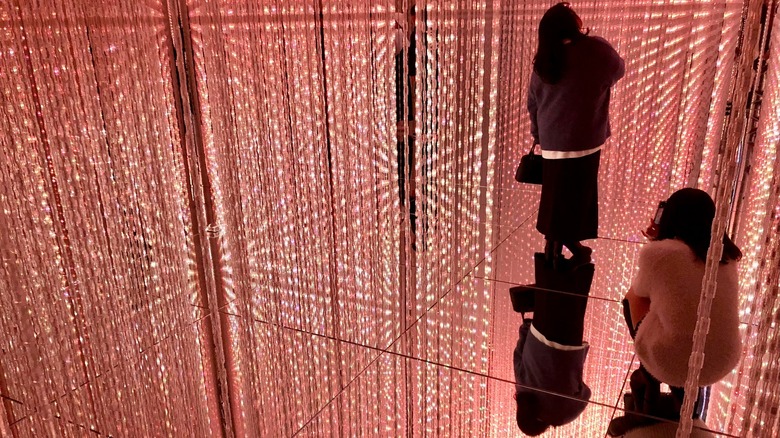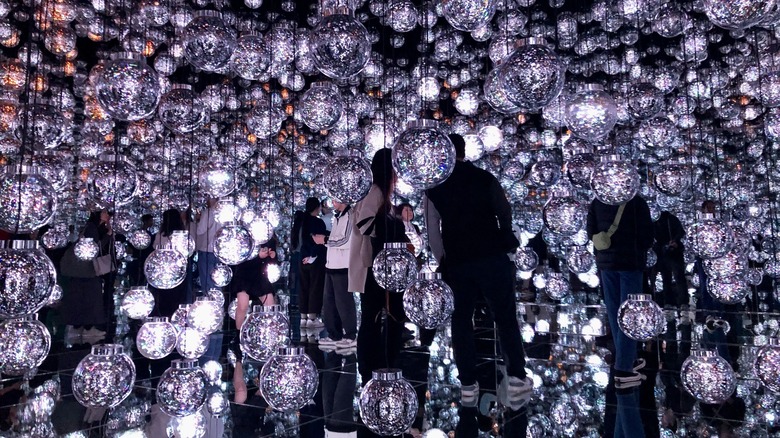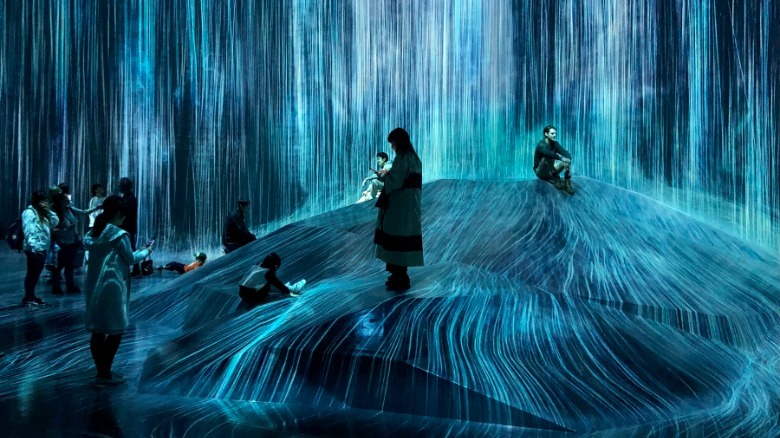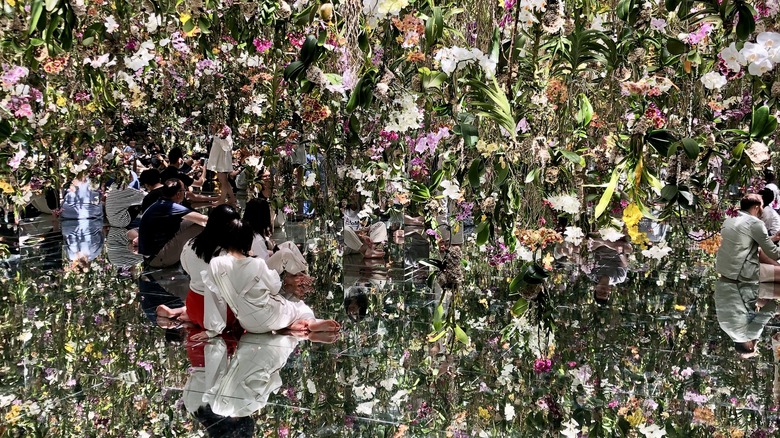Two Of The World's Most Popular Museums Are Paradise For Instagrammers
Move over, Van Gogh: There's a new art game in town, and it's digital. That was the feeling in 2021 when Tokyo's teamLab Borderless claimed the Guinness World Record for the most-visited museum by a single art group. Two years prior, it had overtaken the Van Gogh Museum in Amsterdam with almost 2.2 million visitors. However, in August 2022, just 15 months after becoming the world record holder, the original teamLab Borderless — located on the artificial island of Odaiba in Tokyo Bay — closed.
In its absence, a sister exhibition by the same digital art collective, teamLab Planets, became the new go-to destination for Instagrammers in Tokyo. The venue is Toyosu, another constructed island that's also home to the world's biggest fish market. You may have seen celebrities like Will Smith and Kim Kardashian sharing images from inside both these camera-friendly museums, where visitors wander in and out of rooms with interactive art installations. The shifting projections of artwork are almost tailor-made for selfies since, without human subjects to anchor them, some of them might just appear like dazzling screensavers in photos.
With Tokyo itself trending for travel, teamLab Planets was among the five most-searched-for museums on Google in 2023 (via CNN). Now, it's rejoined by teamLab Borderless, which reopened in February 2024 in a new location in the Azabudai Hills complex (where Japan's tallest building, Mori JP Tower, stands). The experience of visiting these two museums is slightly different, but each offers visitors the chance for some stunning photo ops.
Get lost at teamLab Borderless in Tokyo
The creatives at teamLab Borderless bill the experience as "a museum without a map," but you'll find it on the basement floor of Garden Plaza B in Azabudai Hills, just a short walk from the Kamiyacho subway exit. Visitors are encouraged to download the official app and use it to identify the nearest artwork as they explore the underground museum maze. Yet the app only detects art in close range, and with so many mirrors in unlabeled rooms that alternate between bright and dark, it's easy to get turned around, lose your bearings, and walk into your own reflection in this space-age funhouse.
As you pass from room to room, you'll see things like lumbering flower animals and shimmering LED light bubbles. Here, Odaiba's popular "Forest of Resonating Lamps" has given way to a "Bubble Universe" and "Microcosmoses," where glowing orbs hang all around you in one room and slide along tracks in another room.
The new teamLab Borderless features some returning art, such as "Borderless World." It flows through a central room where visitors can climb a rock-like hill as the floor and walls come alive with water-particle projections, as seen above. You may double back on this room more than once, but you'll have a different visual experience each time. Rather than cycle through a recorded loop, the art is computer-generated live in response to visitors. The same room might display two formations that look nothing alike, within minutes of each other.
How Planets and the new Borderless are different
Unlike teamLab Planets, there are no captions on the wall naming each work of art and explaining its concept at teamLab Borderless. Even with the app, it's not always easy to tell where one artwork ends and another begins, since the digital canvas around you is ever-changing. This matches the concept of a creative landscape without borders, where ideas overlap, as in the human imagination.
One thing that greatly differentiates teamLab Planets from Borderless is that the former is a barefoot experience. At Planets, you'll stow your shoes in a locker, then roll up your pant legs and wade through a water area that includes a colorful, interactive koi pond. In this way, the erasing of boundaries between the visitor, art, and other participants becomes even more sensory-driven. (Yes, there is an odor of wet feet at times.) There's also an open-air garden with a "Floating Flower Garden," full of suspended orchids, which reflect off mirrors on the floor for a fully immersive pocket of greenery.
Both teamLab museums in Tokyo have an "Infinite Crystal" space where you can take Instagram-ready snapshots of yourself and people's dark silhouettes against the backdrop of a pointillist light sculpture. While Borderless is a permanent exhibition, Planets is set to close in late 2027. You can purchase tickets online from either museum's website; they start at ¥3,800 for adults. The day before your reservation, teamLab will email you a link to your ticket and QR code.



